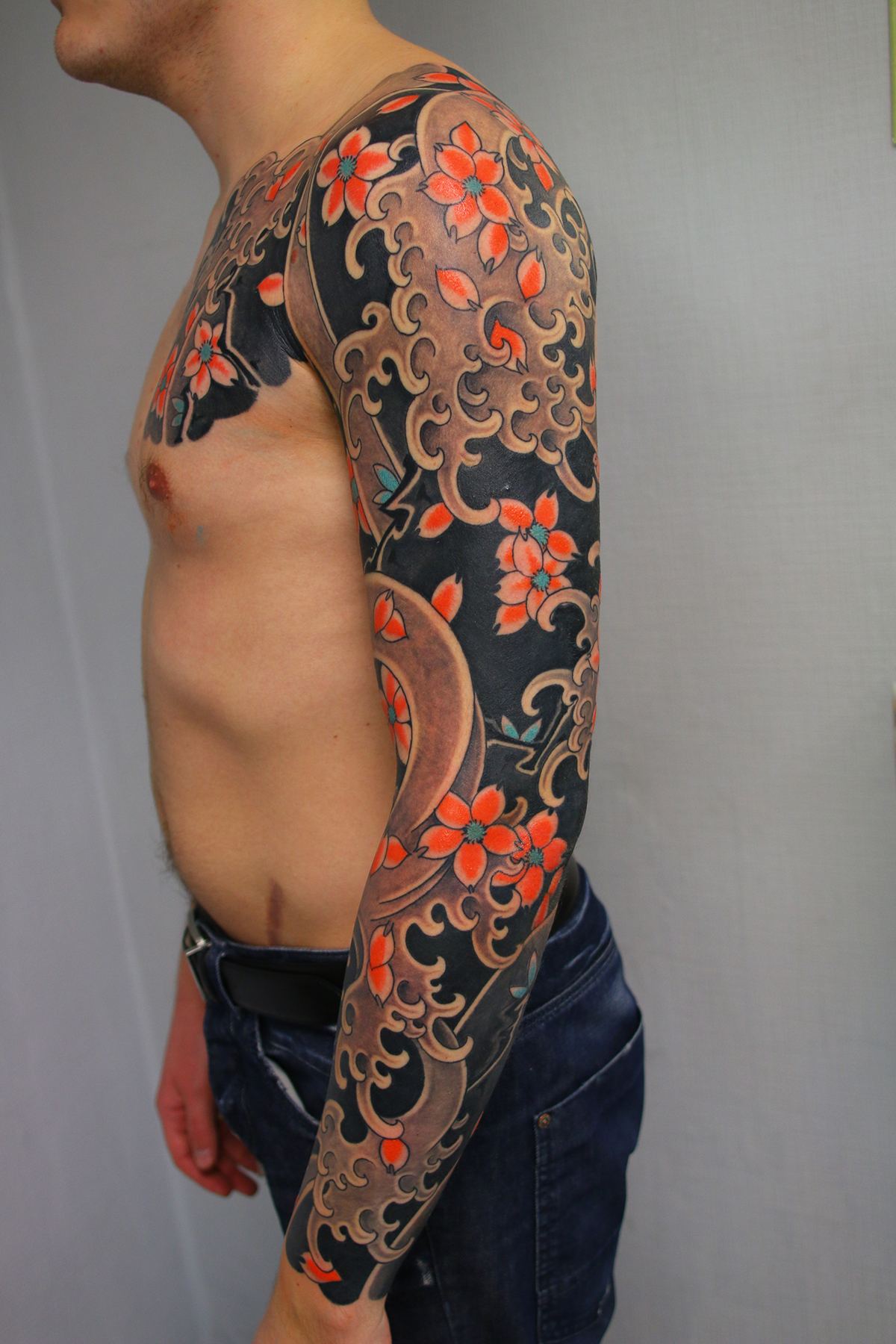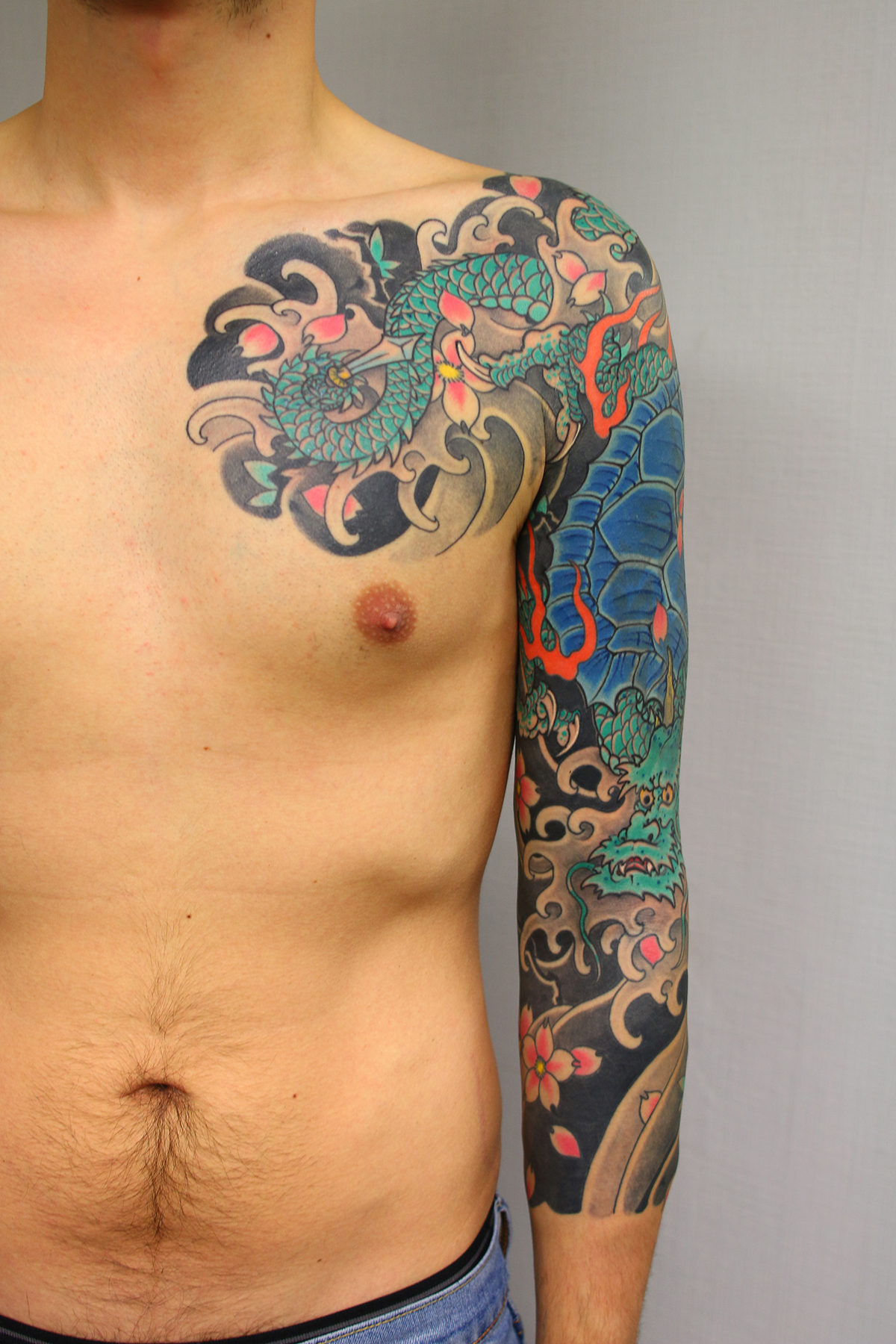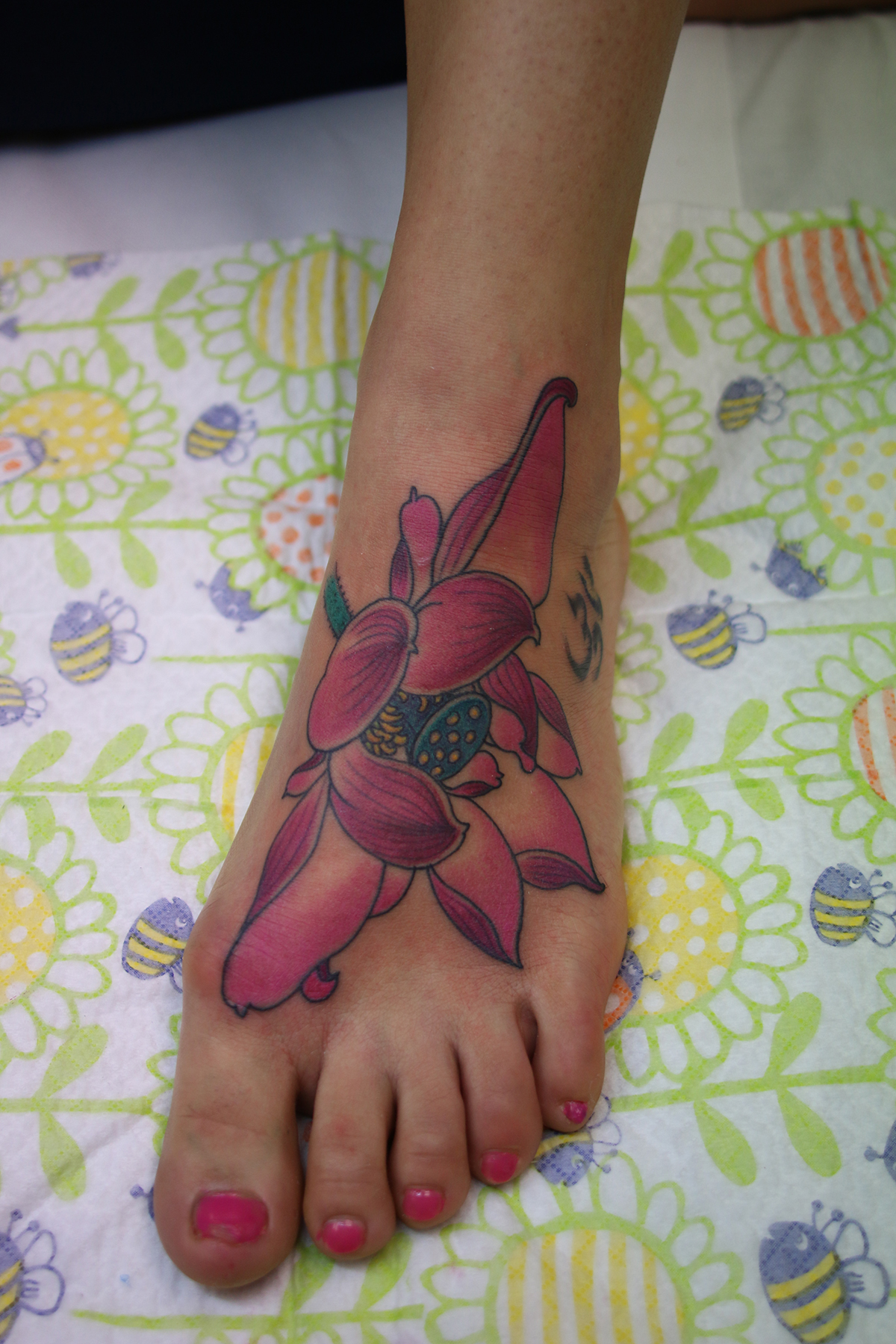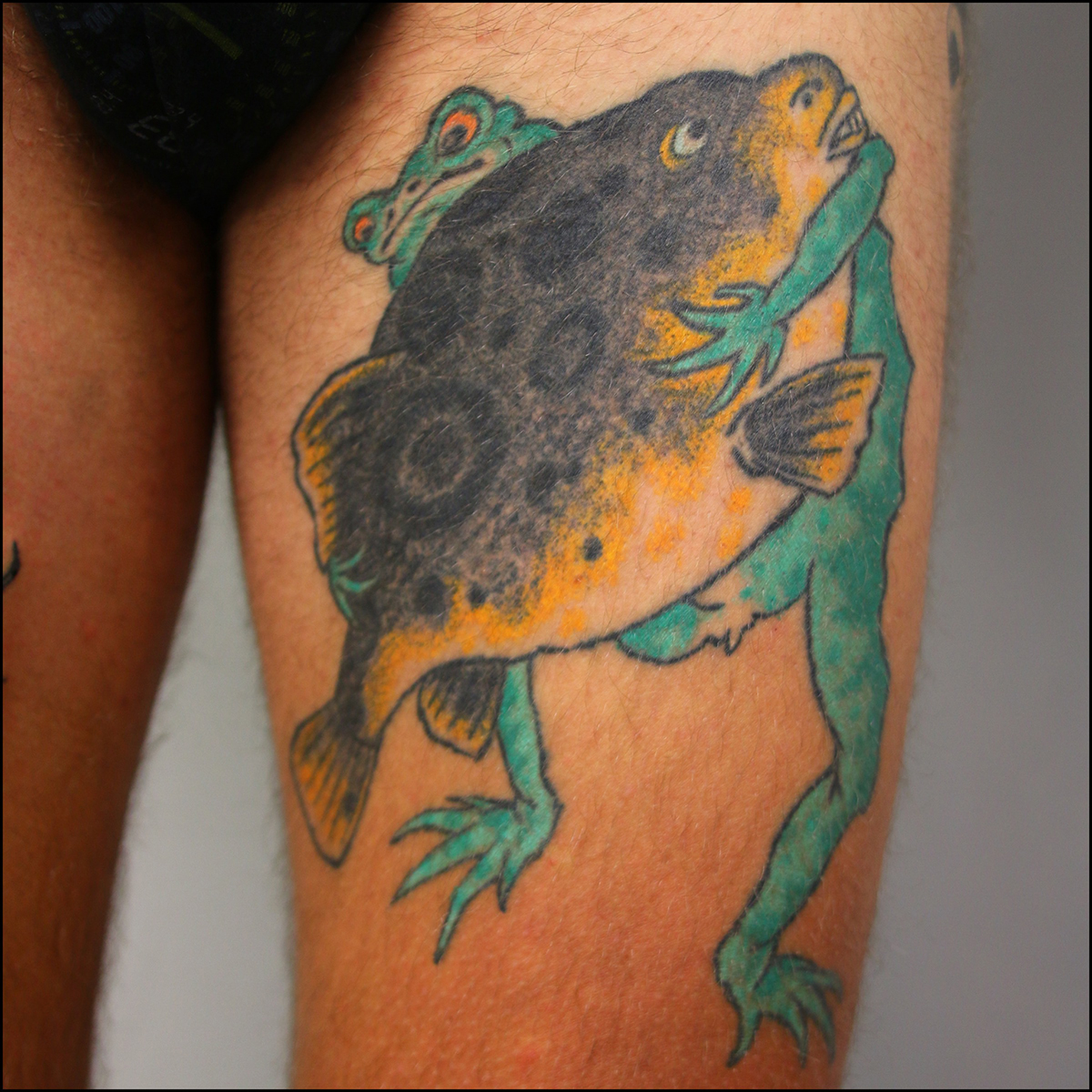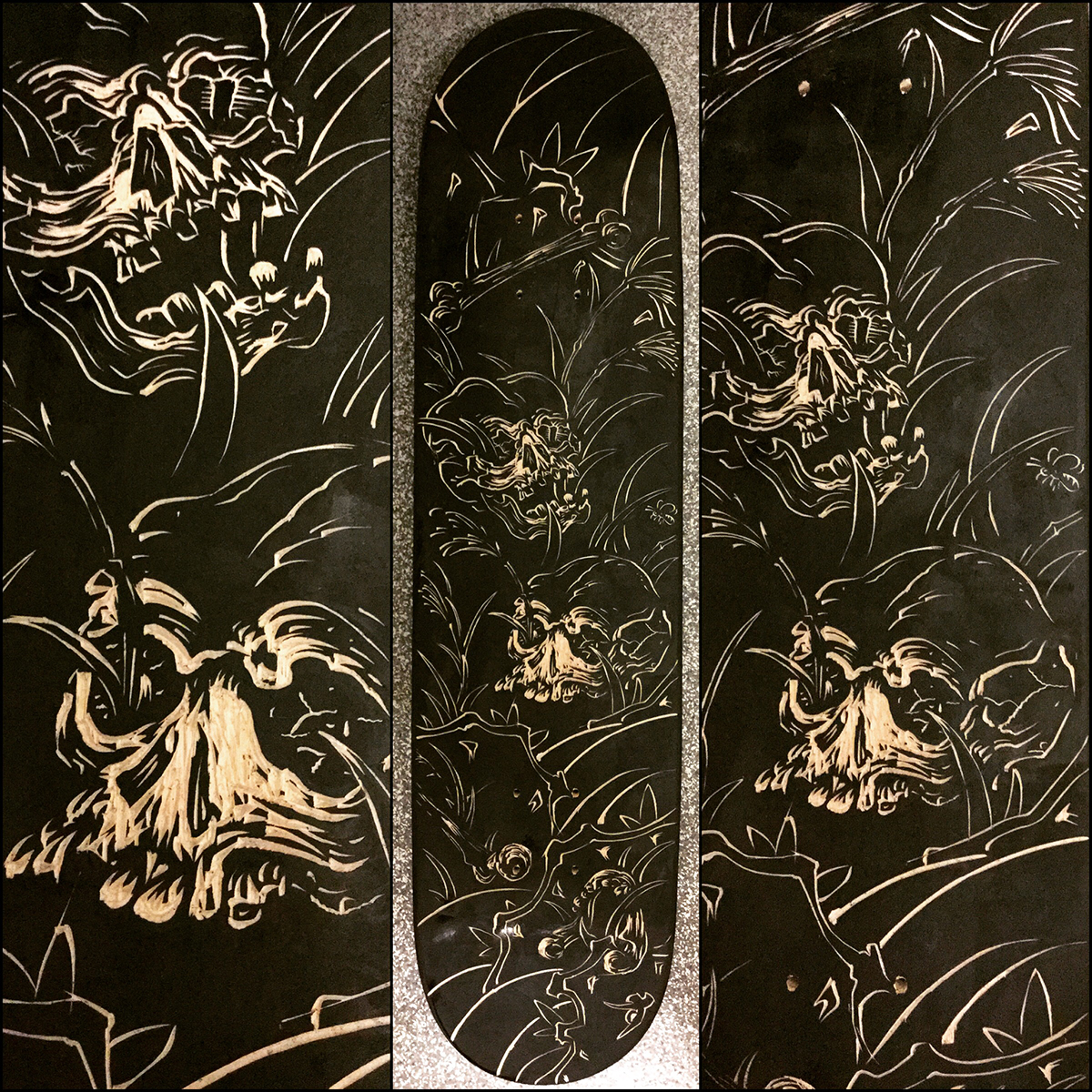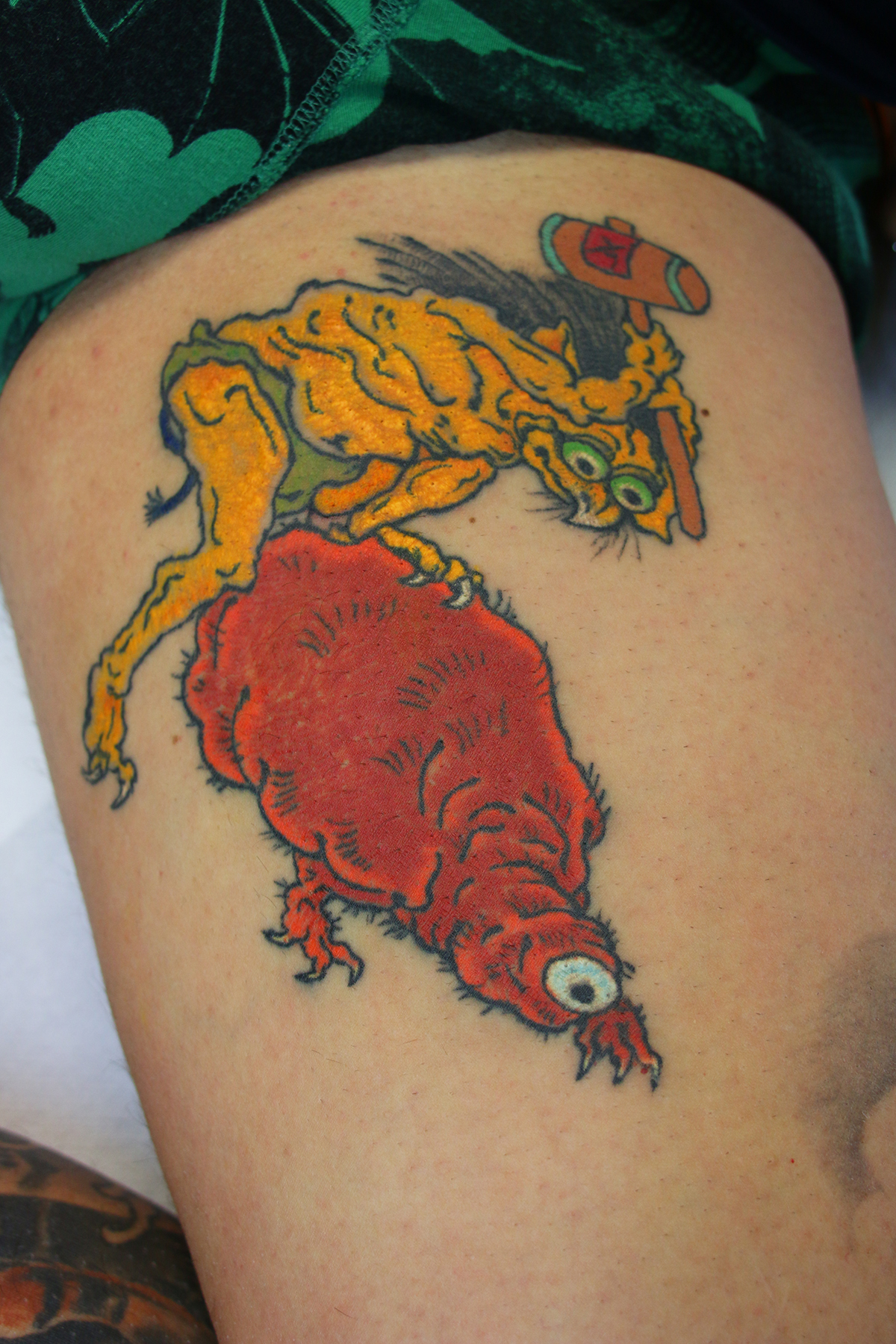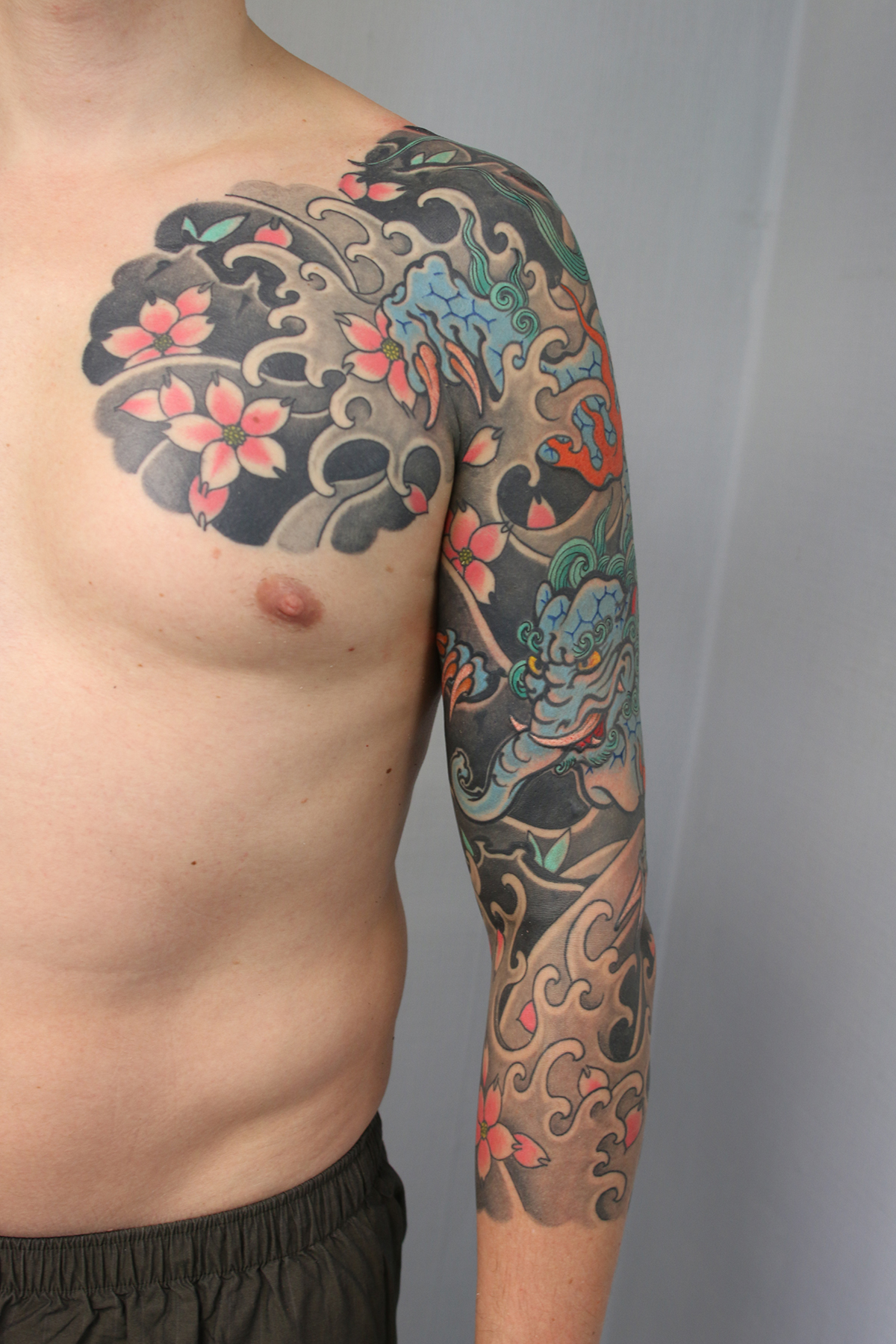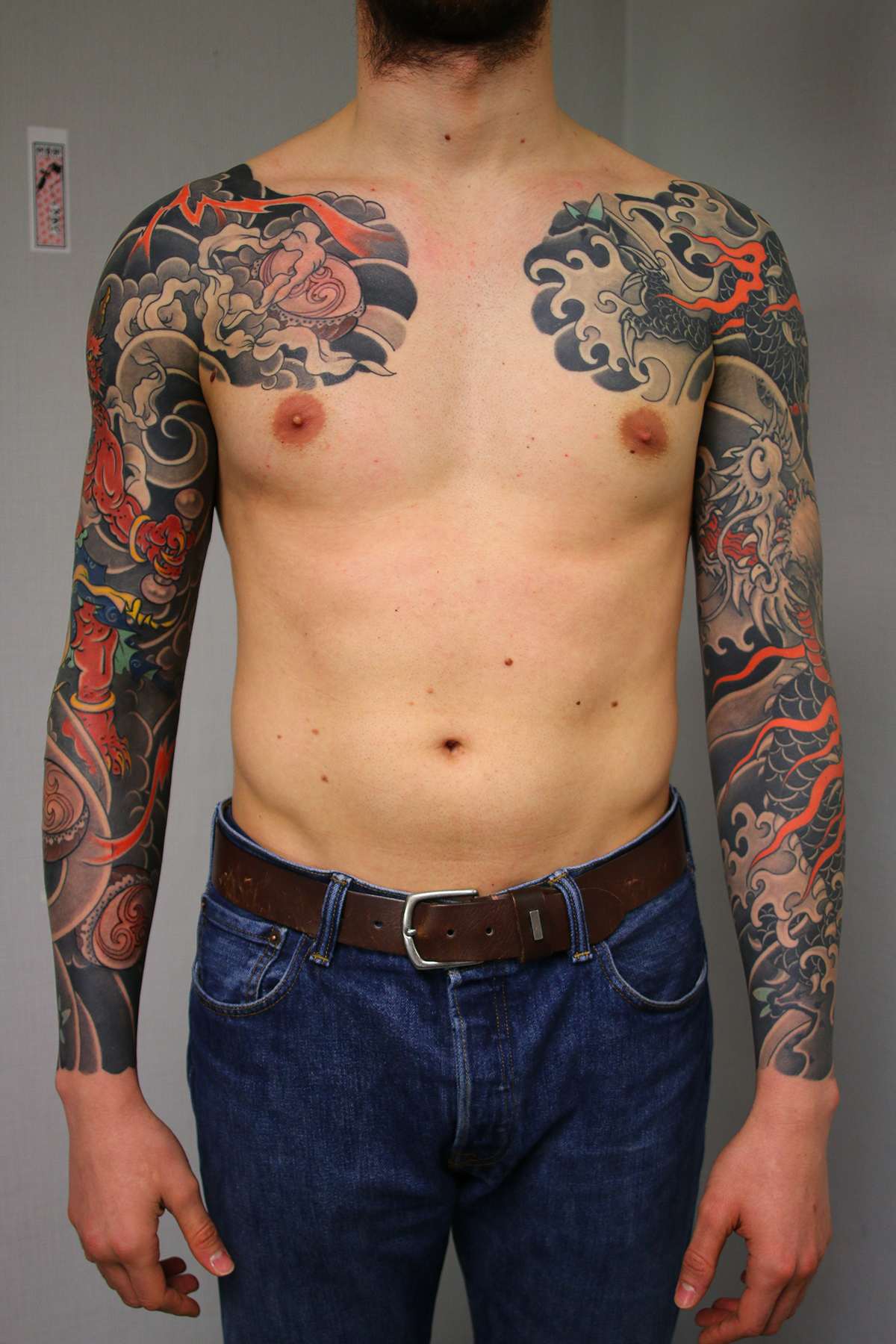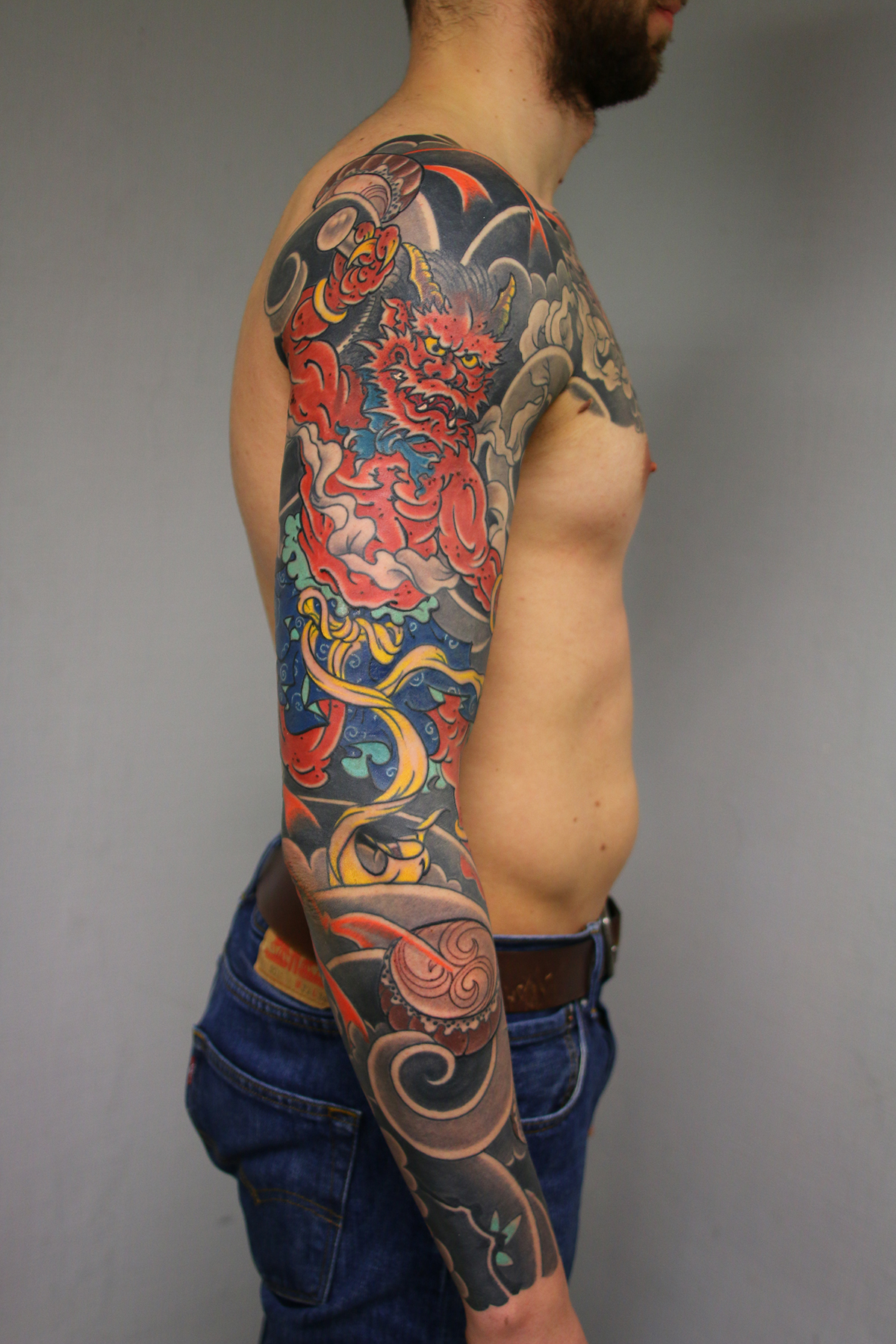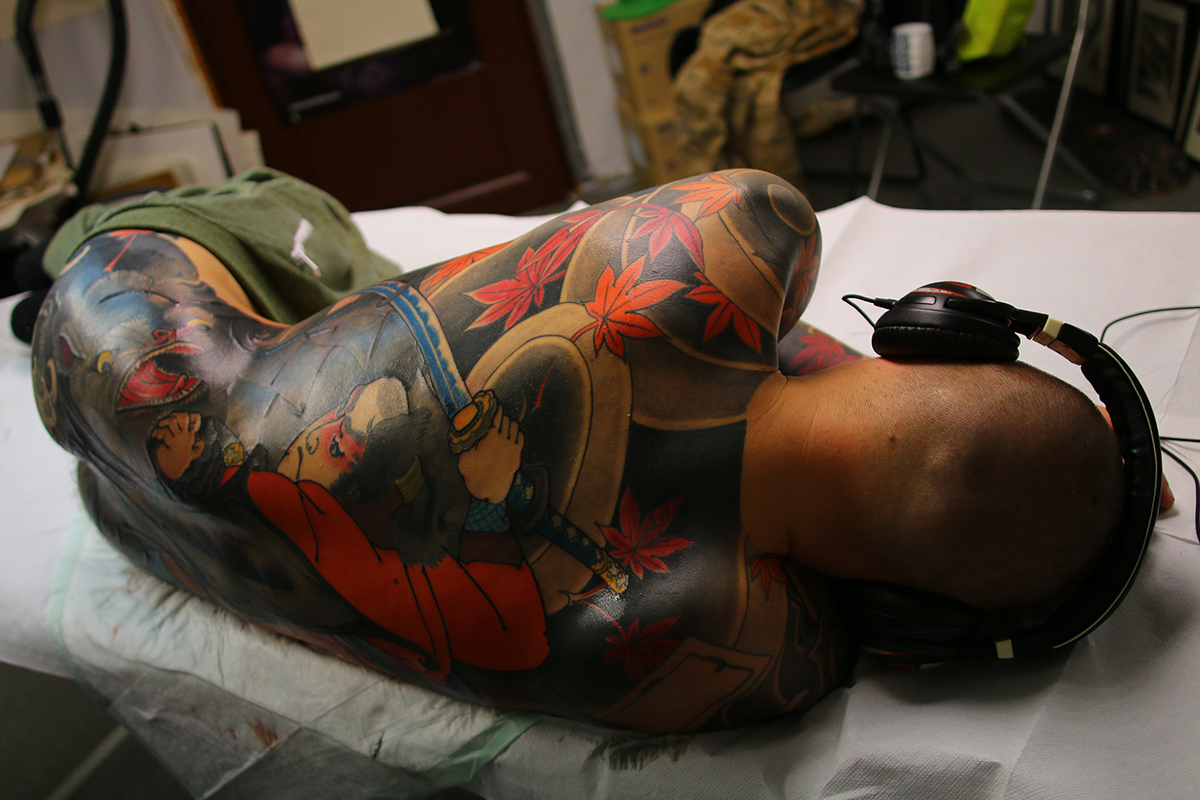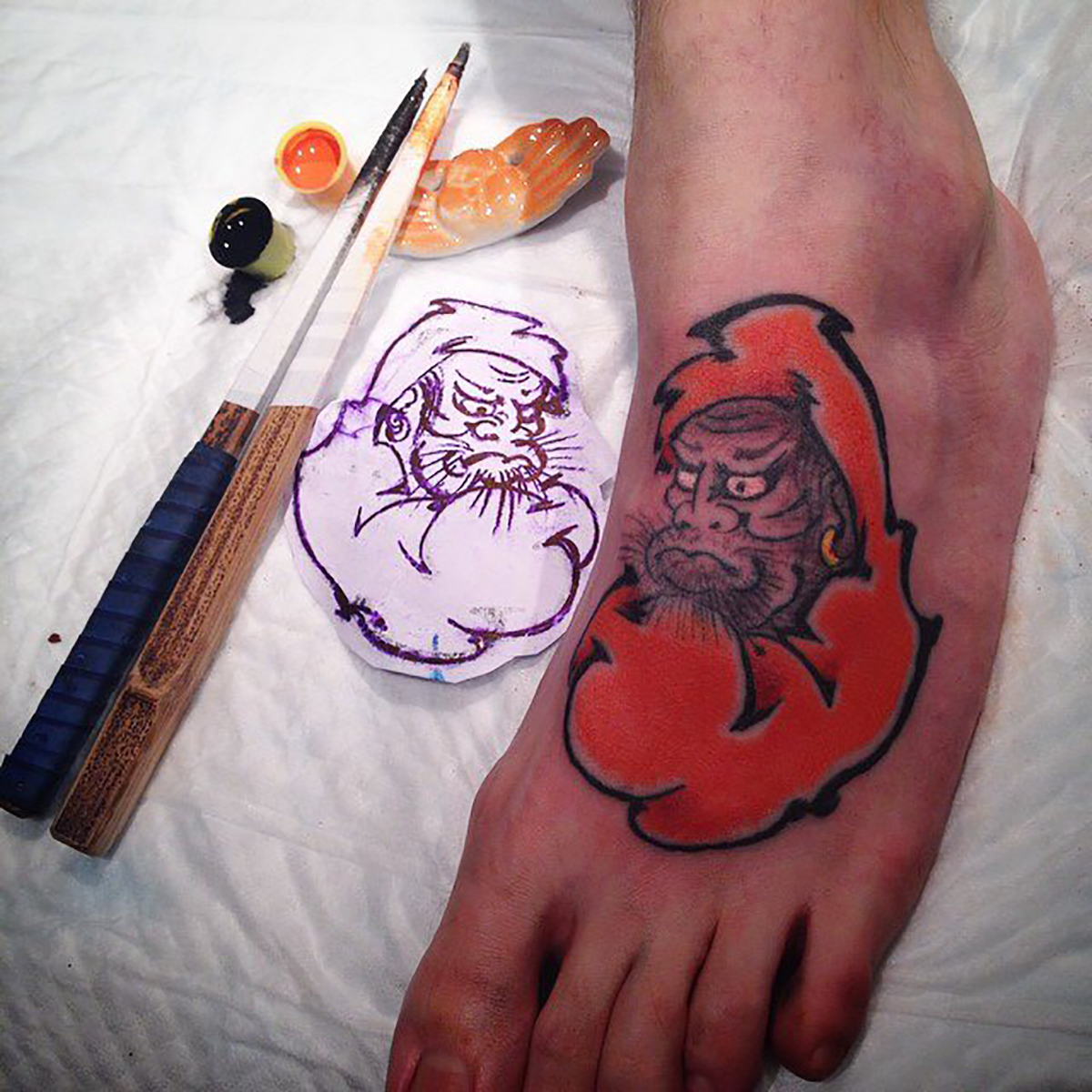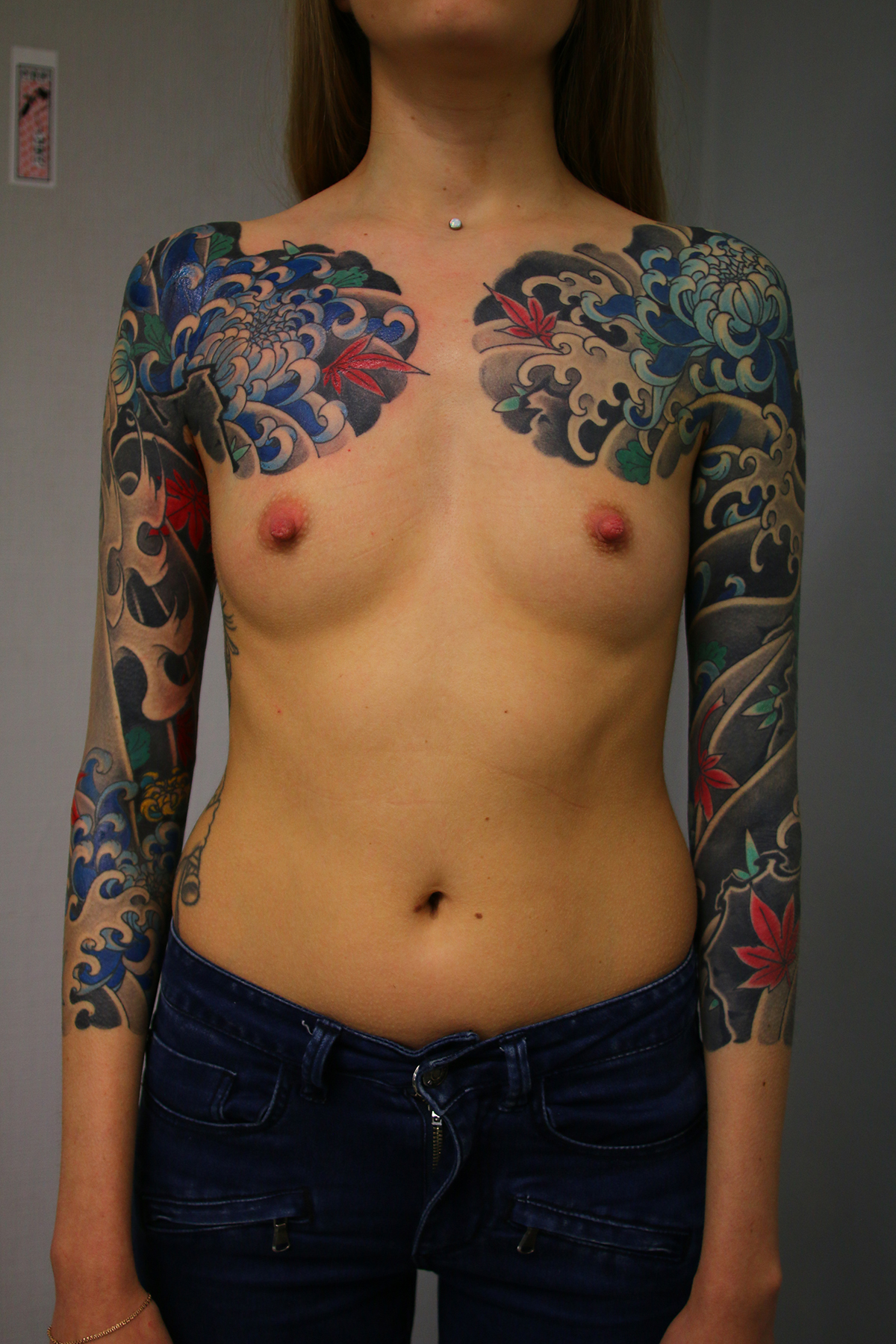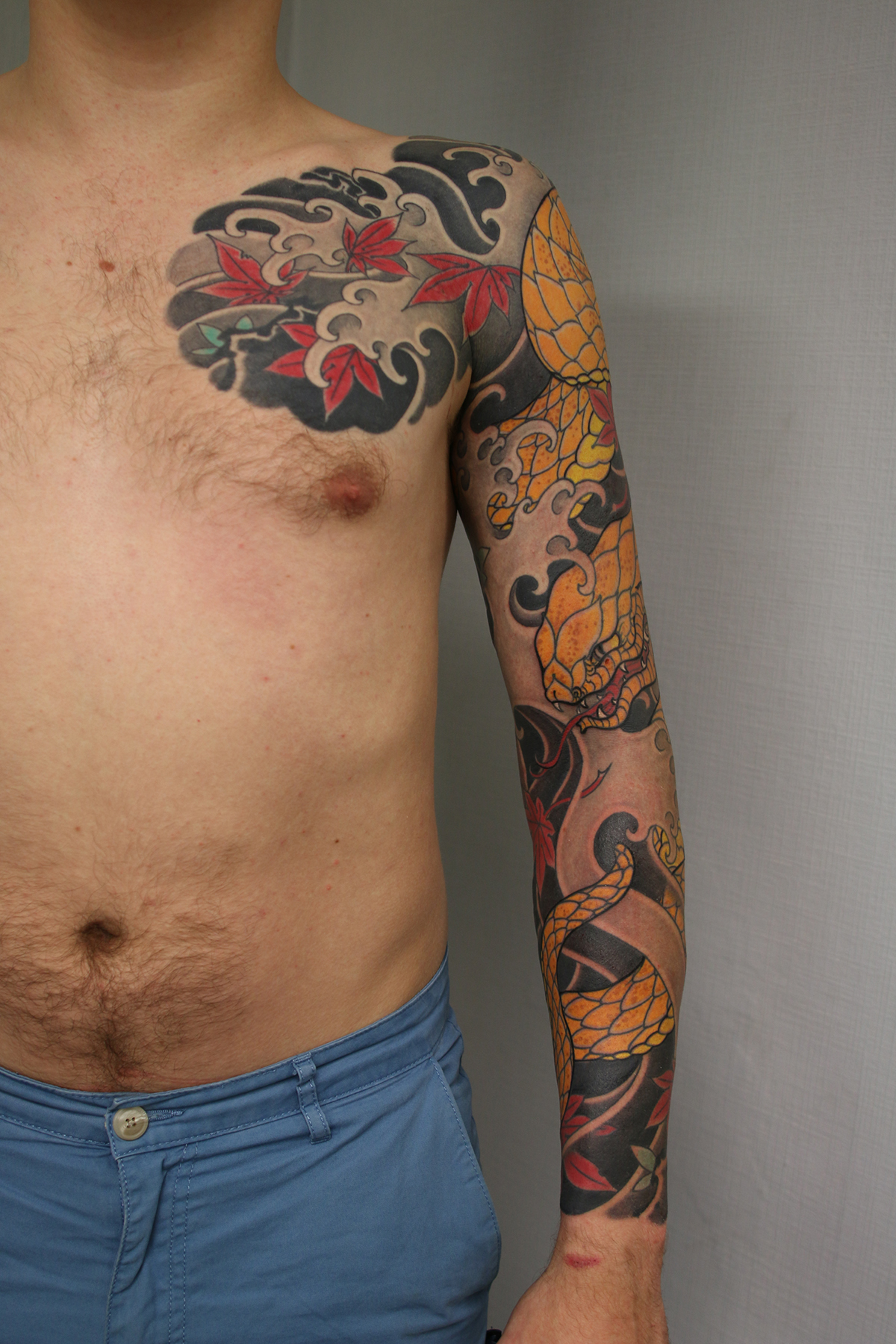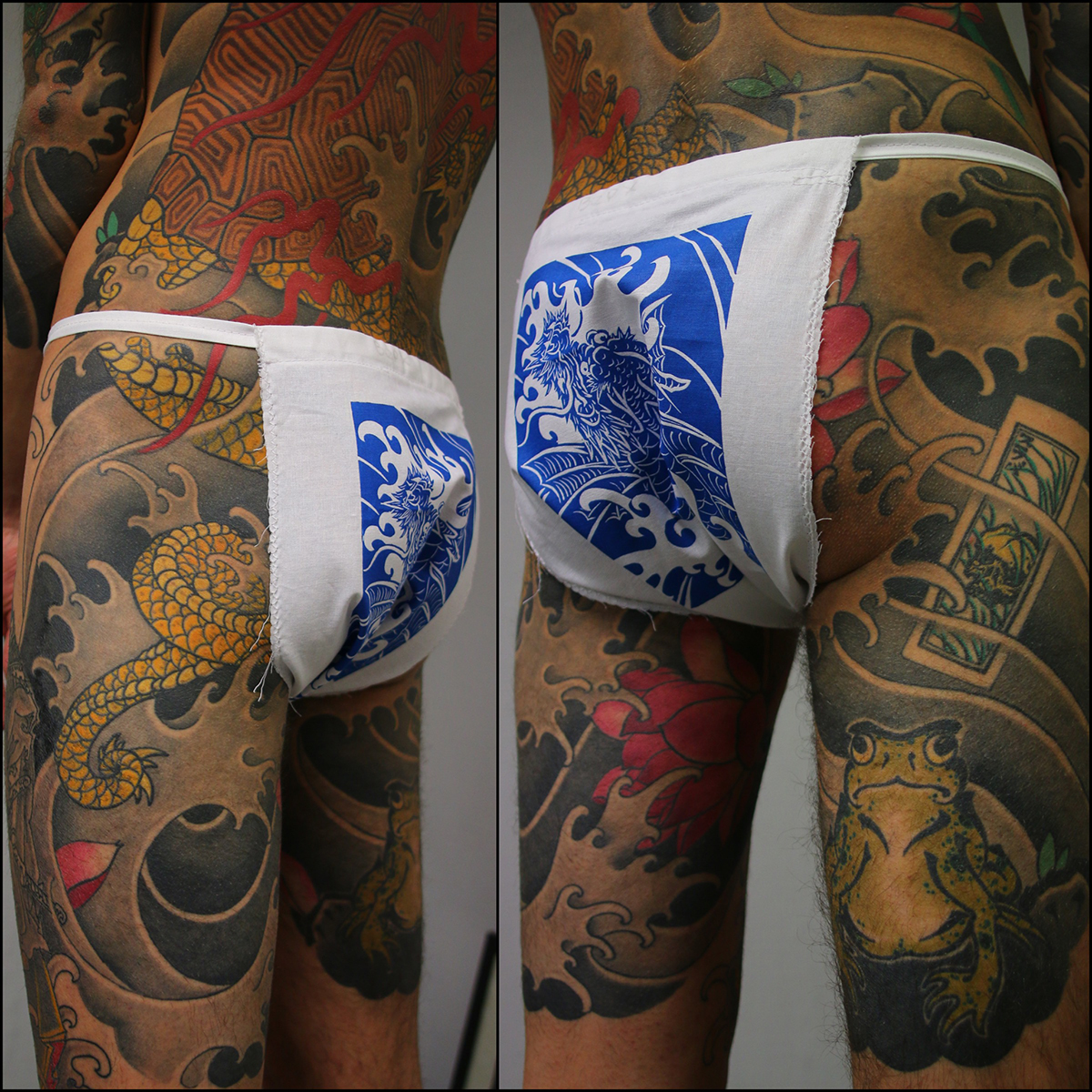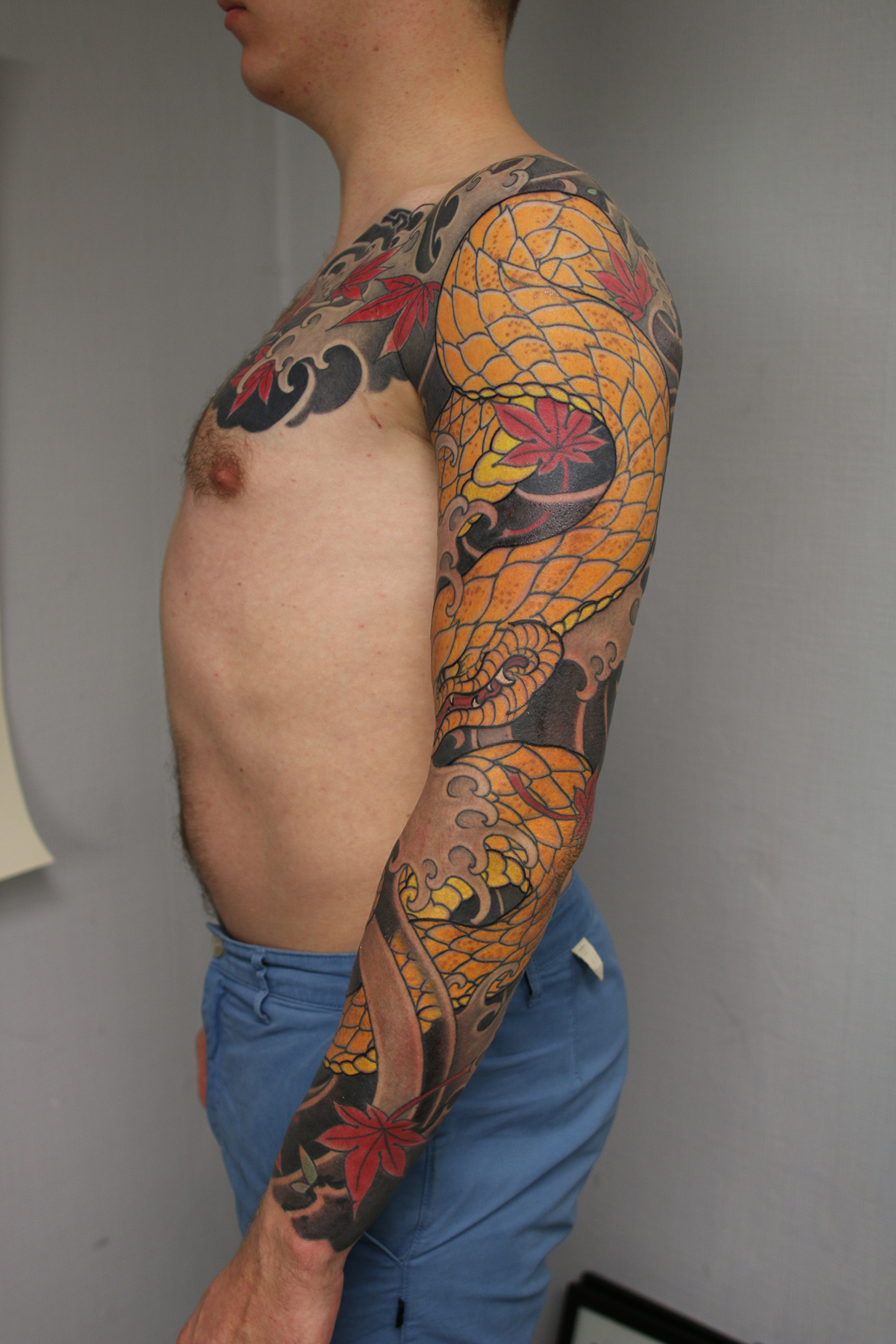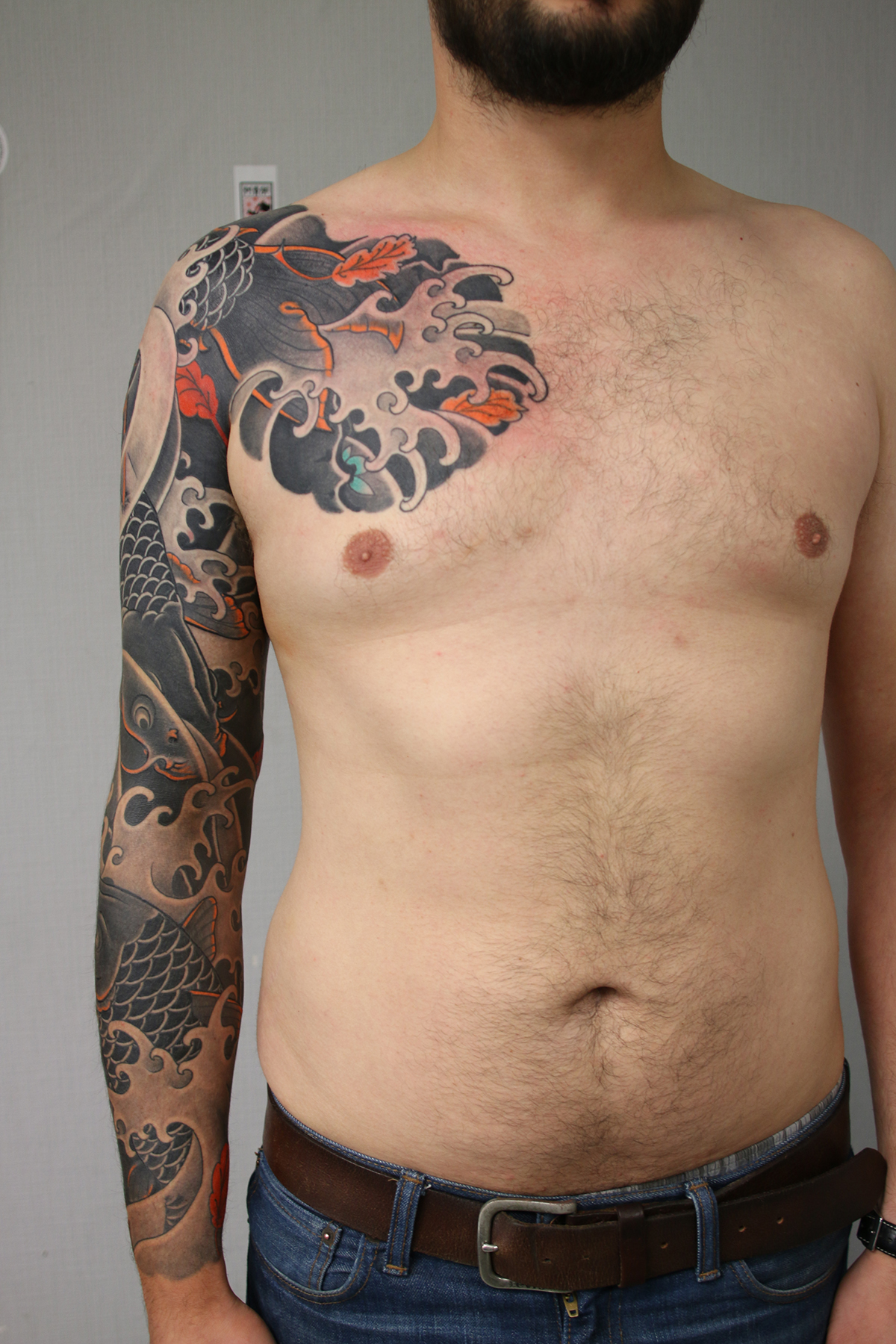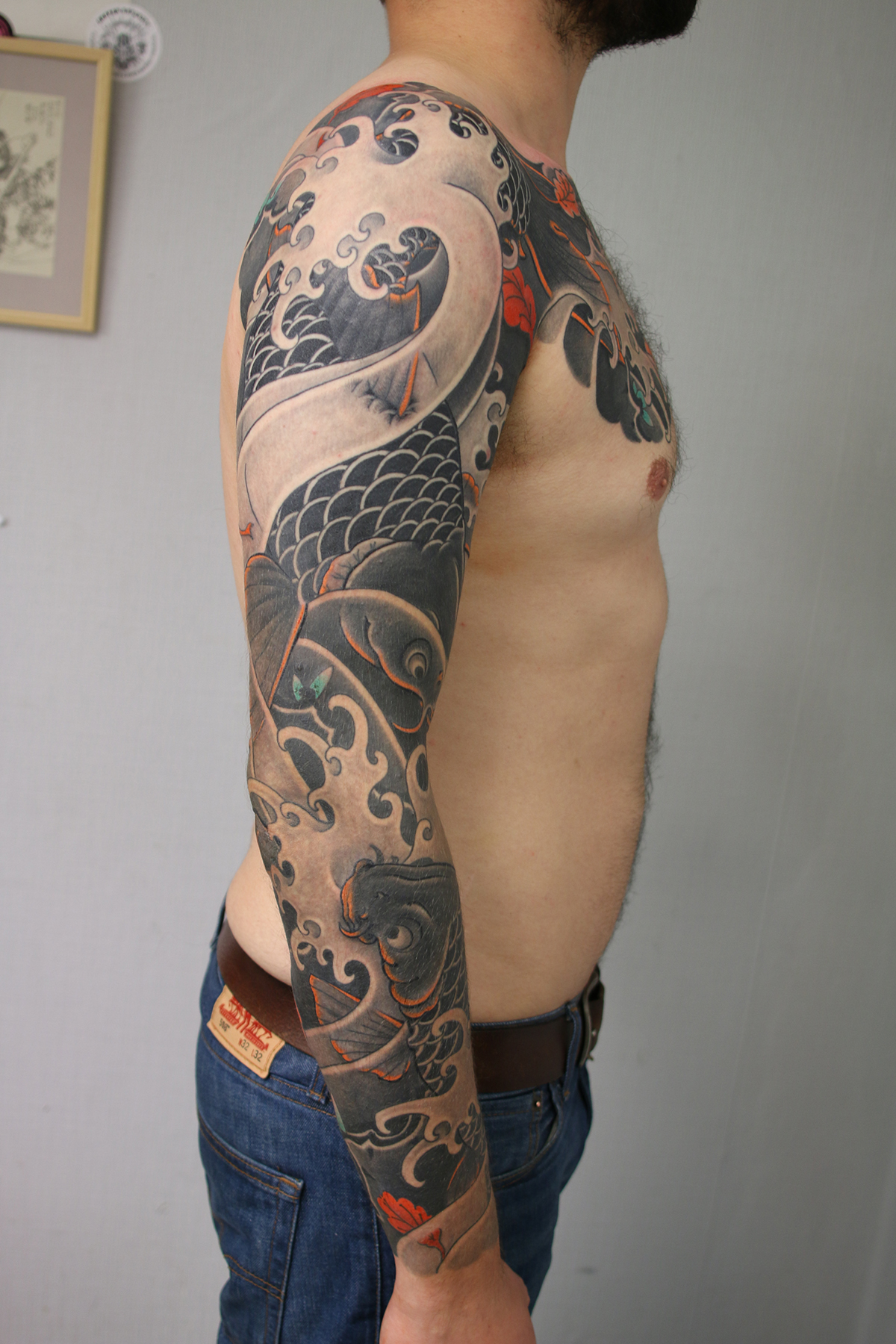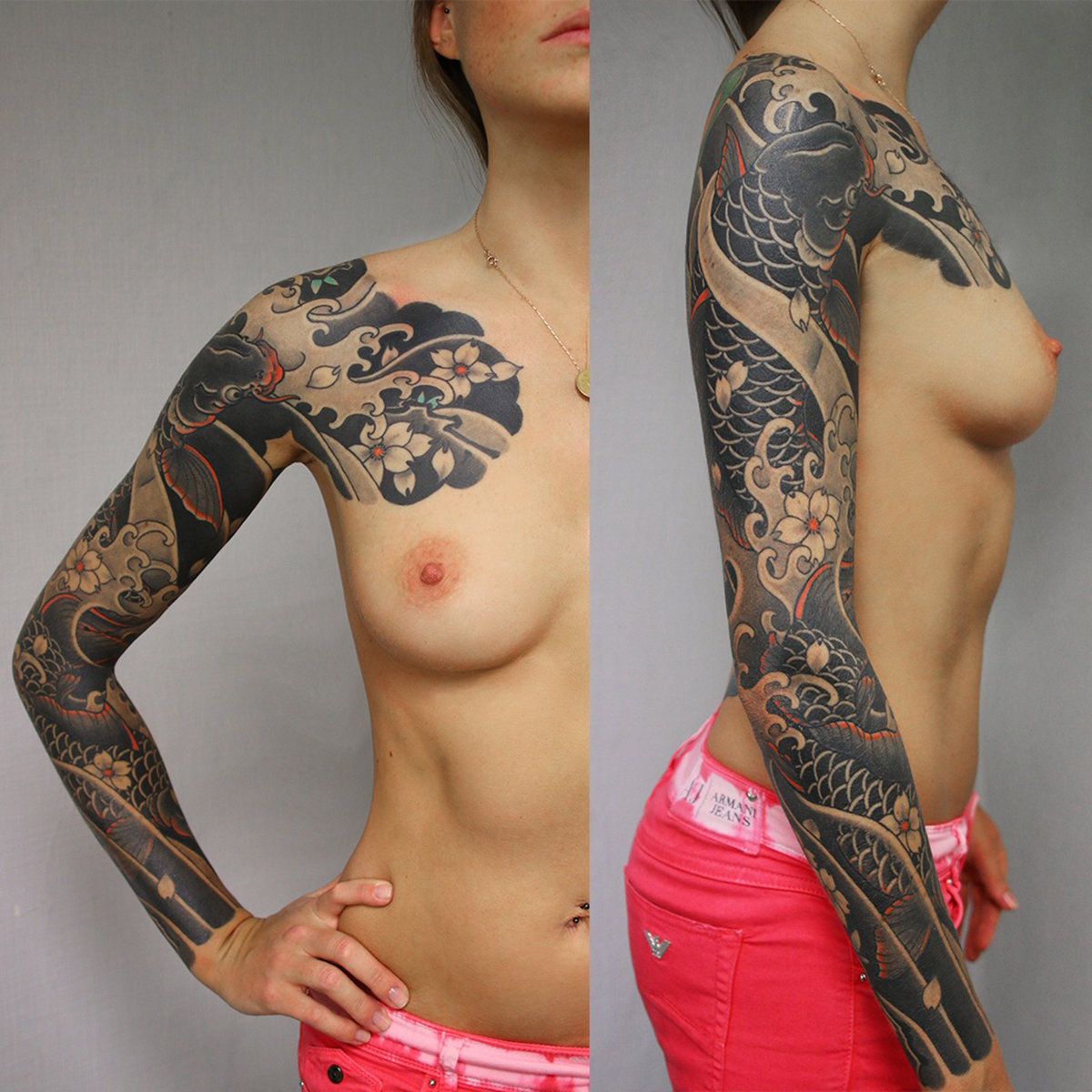Russian tattoo artist Slava Starkov, originally from St. Petersburg, found the perfect combination of art and tattooing in the Eastern tradition. He has since shaped his own appreciation of the Japanese style with an emphasis on impact, movement and technique. A style he now practices by hand, using the tebori technique, thus satisfying his quest for authenticity.

What does the tattoo world looked like in Russia when you started?
When I was a kid, you could only see tattoos in bath or in sauna. It is hard to call it tattoos, because it was simple soviet homemade engravings on the skin, usually done when in the army or in jail. I started doing tattoos in 1999, I was 18 years old, when I entered university in Saint-Petersburg to study water-engineering. At that times there were only a few professional tattoo artists and the best were George Bardadim, Bi Joe and Taras Shevchenko. Most of the tattoo artists used self-made machines or machines from foreign countries. There were tattoo studios in Saint-Petersburg but many tattoo artists worked in beauty salons, where they had a separate room, some of them worked at home too. Most tattoo artists made black-and-white tattoos, tribal style was popular. The ultimate dream for all tattoo artists was realistic style. Almost no one did traditional tattoos, such as old school and Japanese. No one that I knew was specialized only in one style. At that time you would be considered one of the best if you could work in different styles. In my opinion, more serious tattoo artists were in Moscow, and when the internet appeared I got aware of people making western style tattoos there, old school, new school and japanese. They used professional equipment, their tattoos were very bright and saturated. I was really impressed and I wanted to make something similar. Mostly I liked American new school style and started to make it and I tried to copy Moscow tattoo artists. It was hard to start making tattoos because there was no equipment available and I would need to learn how to create a tattoo machine. I did my first tattoo machine with my friends using a motor from a tape recorder and metal parts from a children`s building kit. And I started to practice tattooing on my friends and myself. I studied the techniques of tattooing for several years. It was really hard to find friends between colleagues, because many of them were addicted to drugs and alcohol. I was very young and it was hard to progress while communicating with these people. A few years later I met George Bardadim, a true master of high level and international class, he gave me some good advices.


What style did you get into?
In 2005 I came to Moscow to work in the largest tattoo studio in Russia. At that time, I was doing different styles, but I mainly specialized in American new school. I practiced a lot. Every day I did almost four tattoos. I worked hard and didn't take vacations. One day I met a special guy who told me I had to do something serious, something that could be called art. I was very impressed by his words and that excited me. I was obsessed with tattoos and dreamed that it would become all my life. I had to find the right way to reach the next level. I started to think about the style that was closest to me, the one that spoke to my soul and I thought back to the back of this man I had seen, tattooed with contrasting carp and intense black. It was spectacular. I knew that Japanese tattooing was a real art, because it had developed along with the art of Japanese woodblock prints. I was impressed with the size of these tattoos and loved the shape they took on the human body. I also felt very close to it because I grew up in a small town and used to spend a lot of time in nature, surrounded by water and animals. So I fully focused on Japanese tattooing in 2006.


How did you get interested in the japanese tattoo?
In 2005 I came to Moscow to work at the biggest tattoo studio in Russia. At that time I have worked already different styles, but mostly I specialized in American New School style. I practiced a lot in Moscow, every day I made nearly four tattoos and worked almost every day without holidays. One day I met a special guy who said that I needed to do something serious, something that could be referred to art. I was very much impressed by his words and this turned me on, because I was obsessed with tattoos and was dreaming of doing it all my life. But, to reach the next level of tattooing, I had to find the right way. I started to think about the style that was close to me and to my soul. Shortly before that I saw a man with a back tattooed in strong black with contrasted carps. I was really impressed. I knew that Japanese tattoo was a true art, because it had developed along with Japanese woodblock prints art. I was impressed by the size of Japanese tattoos and I liked the spectacular combination with the human body. I felt also really close because I grew up in a little town and I use to spend a lot of time in nature, surrounded with water and animals. I fully concentrated on Japanese tattoo in 2006.


How did you start?
At first I simply tried to copy famous Japanese tattoo artists. The first book that came into my hands was the book about Horiyoshi 3 (“Tattoos of the floating world” from Takahiro Kitamura, Hotei) and I learned the style by looking at photos of his works. I came back to Saint-Petersburg, left the studio I was working in because I could not do the works that I wanted and at that time clients didn`t want Japanese tattoos, the size scared the people. I started working at home.


What is your appreciation of the style?
First, I focus on its spectacular aspect and the contrasts in order to create strong emotions and impress people. This is the most difficult thing. I also think about composition, size, balance, and human anatomy. Technically, you need also to understand how the Japanese tattoo was technically created during the last hundred years. In Japan, machines have only been used since the last decades, before they did all by hand, and the range of tools was severely limited. It applied not only to tools, needles, but to colors and pigments too. It is necessary to understand why the Japanese tattoos looks exactly like this. The sketch for the tattoo was based on the Japanese woodblock print. It is then necessary to understand how woodblock prints were created, by who, and also the methods of stylization of the Japanese woodblock prints which later were transferred to the Japanese tattoo. Secondly, you need to realize the technical limits caused by scarcity of the tools.


You seem to pay a lot of attention to backgrounds, why?
For me, the background is the most important thing, even more than the main subject. Through the background tattoo can be more interesting, more spectacular and also it is possible to link different parts of the composition – the main and the secondary. In addition, the background combines harmonically with human anatomy and allows the tattoo to flow from one place to another. The Japanese background is the business card of the style and for me its authenticity is very important. It is interesting to work with the background, because it allows to make stylization of the elements and, for example, you can transform the water into something mythical, something decorative. It is very interesting process of stylization.


Which artists do you like the work?
There are countless wonderful masters and it will take a lot of time to name all of them. But I understood that it is not enough to study only the fine arts of Japan. It is necessary to research more widely not only the concept of perception of the art by the Japanese people, but also their perception of the world and their self-consciousness. That’s why I pay now attention to the people who devoted themselves to the crafts and their concept of life is interesting for me. At this moment there are some people who inspire me and they are not only tattooists and artists. One man works as cook, another makes hand-made things and knick-knacks from bamboo, some of them make woodblock prints, but all of these are combined by love to their work and by fanatic enthusiastic wish to achieve excellence in what they do. These people name themselves artisans, but when I look on the result of their work, I can truly call them artists, creators, because they create an art and think only about self-perfection, but despite this, they are very modest.


You work also with tebori -tattooing by hand-, how did you come to learn this technique?
I have known it for many years but it’s only been a year that I started using tebori technique. I did not know and did not understand how I could develop my skills in Russia. But, while studying the theoretical part of it in Japan and communicating with my Japanese friends, I received bamboo sticks as a gift and I decided to try. Unexpectedly, I was absorbed in the process. Tebori is very similar with engraving and the results of it, accordingly, resemble each other. In addition, it is a really interesting process from beginning to the end. Afterwards, I realized that it is a very important part for understanding the Japanese tattoo and Japanese style. It is possible to understand why it looks like this, just only knowing the tebori technique.

What is the difference between tebori and machine?
I am often asked this question. And the first thing I usually answer: « Imagine that you ride on car and imagine that you walk by foot». Technically, the difference for me is exactly similar. Riding car gives you speed, but you lose some feelings. When you walk on foot you are slower, but you can feel almost everything. Visual difference is also colossal. Again it can be compared with drawing on the computer and drawing with a brush. The difference will be very noticeable. Tebori gives us more vivid and authentic impression of the style. Tattoo that has been done with tebori is always individual and very special. You can feel the hand work of the artist and the breath of the past. Sometimes machine can make it too much perfect without feelings and emotions. + IG : @slavastarkov Website: www.slavastarkov.com






































